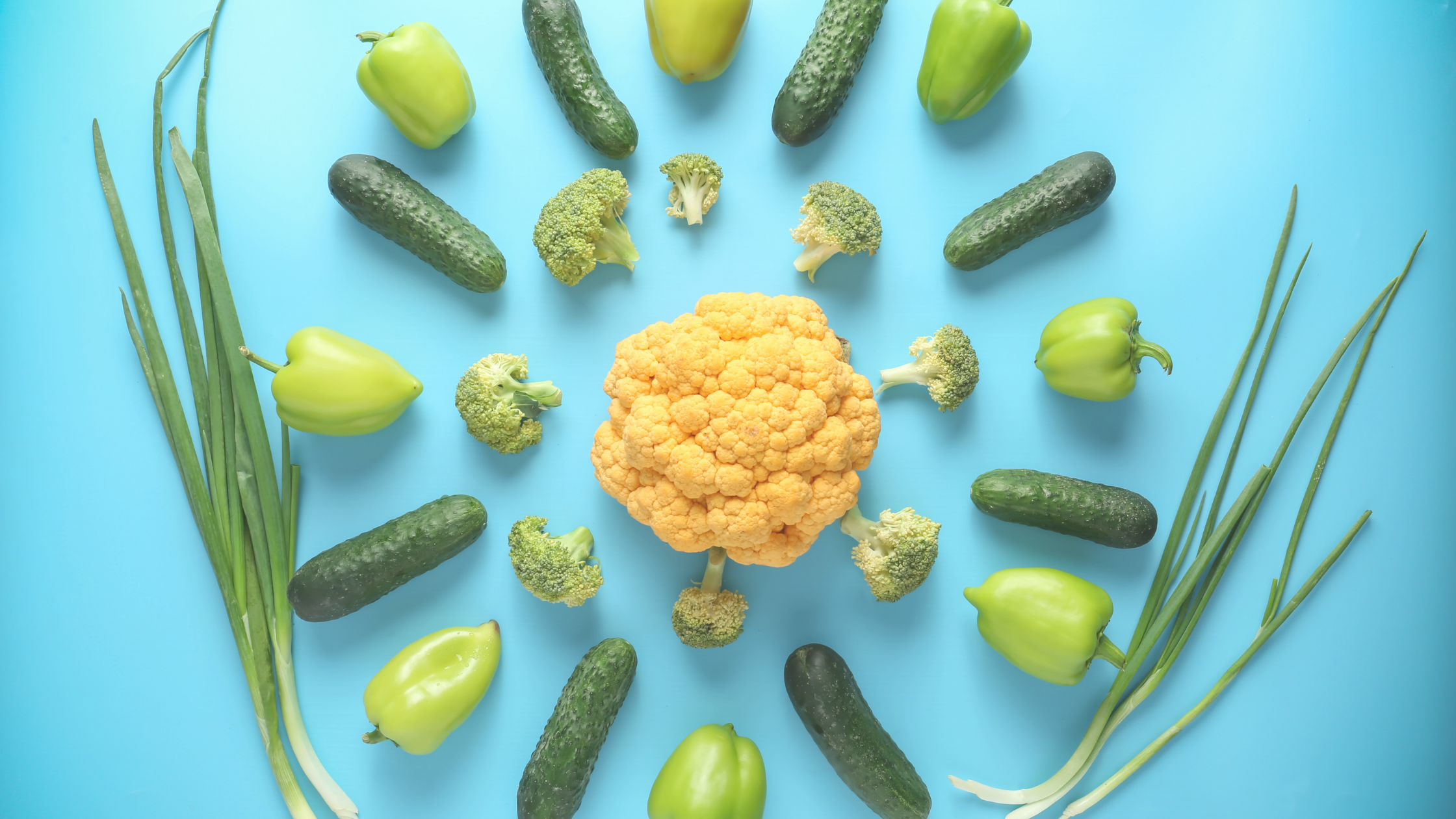
Please don’t hate me when I tell you this, but I have a nine-year-old who eats her vegetables.
Not just leaves of iceberg lettuce, either—we’re talking fennel, whole tomatoes, celery leaves, cilantro, beets, golden carrots, cabbage, fava beans, leeks. She’s kind of a monster.
It’s pretty great considering I was never really a serious vegetables person until about seven years ago, when I made the commitment to eat at least five cups of veggies a day (best thing I ever did). My mom was good about making salads when I was a kid, but I don’t think I was getting the fibrous, crunchy veggies that I really needed.

I recently brought home the 2018 cookbook, New Favorites for New Cooks, by Carolyn Federman, and while there were some seriously yummy recipes (Melty Pesto Paninis, Avocado Toast), none of them were super vegetable forward. A lot of kids’ cookbooks, I’ve discovered, focus on baking and sweets.
C’mon cookbooks! Kids need fiber! Kids need vegetables!
Why should your kid be eating fibrous vegetables? It’s all about the gut—specifically the small intestine and colon. Experts say that fiber is the favorite food of good bacteria in our guts. Good gut bacteria support immune systems and moods, keeping kids happy and healthy.
Fun fact: Bacteria in the gut produces almost 90% of the serotonin in our bodies. Serotonin is the feel-good hormone that regulates emotions, sleep, appetite, and more.

Carrots, celery, fennel, broccoli, jicama, cauliflower…Ready to get crunching? Here are my top tips for getting your child to eat more of those crunchy, fibrous veggies.
Stop snacking between meals
Kids are more likely to eat the food in front of them if they’re hungry. A hungry kid will scarf down anything, really. Put together an accessible assortment—cucumber slices with celery and carrot sticks is easy. Arrange them to look like a crazy face, animal, or vehicle if you really need your kid to play along.
Let kids munch while they’re watching TV
I know, I know: a lot of TV really isn’t good for kids, but we all know that snacking goes hand and hand with TV-watching. Why not let them chill out and enjoy something healthy while you’re getting dinner together?
Serve veggies frozen
I had a weird obsession with frozen peas when I was a kid. My daughter shares that obsession. It’s a novelty, maybe, to gnaw on extremely cold veggies. Maybe you already have some bagged, frozen vegetables. If you want to freeze your own, make sure you lightly steam your crunchy veggies first.
Offer a dip
Kids are natural dippers. Ranch, hummus, pesto, peanut sauce, and creamy cheese dips are all excellent partners for crunchy vegetables. The mighty lure of ketchup might even get some kids interested. Here’s my recipe for an insanely easy and yummy ranch dressing.
Pair vegetables with something less attractive
Or, just serve the veggies first. If kids are offered a plate with chicken nuggets and mixed steamed vegetables, which item do you think they’ll start eating first? That’s right—the nuggs. The Washington Post does a great job of explaining why kids aren’t the best decision-makers when it comes to food.
Offer a little veg at every meal
Even if it’s just carrot and celery sticks, having nibbles at both lunch and dinner will feel less overwhelming than if they’re offered a huge portion at once.
Roast or steam them
A little heat can bring out really yummy–and sophisticated–flavors and textures. My daughter loves how broccoli and cauliflower carmelize and crisp when they’re roasted with olive oil. She also loves how butter pools in the florets after they’re steamed. A sprinkling of salt and a squeeze of lemon makes them even tastier and fancier.
Offer kids a choice
My trick is to ask: ‘Do you want a salad or veggie sticks instead?’
Eat your veggies
In our house, everyone eats their vegetables. I usually have a huge bowl of sliced, shredded, and dressed veggies for lunch, but I always have something green with dinner, too. My husband—who’s not a veggie freak like me—will even partake at dinner.
Shred them or thinly slice them
Grated carrots are fun to eat by themselves, and so is zucchini. Slaw is a favorite at our place. Try traditional cabbage slaw with carrots, red onions, celery, and cilantro. Broccoli slaw is tasty, too. Toss it with a tangy dressing made from mayo, vinegar or lime juice, salt and pepper, and a little bit of oil.
Make a soup
For a re-mix, cook down the crunch. Kids will eat soft onions and leeks, and tender potatoes and carrots in a hot, salty broth. They’ll eat pureed soups, too: Potato-leek, tomato, butternut squash, carrot, and sweet potato go over especially well during the colder months. You’ll definitely get bonus points for tossing on some croutons or chips or whipping up some grilled cheese sandwiches to do dip duty.
Tell them about their bugs
Kids might be more interested in eating for health if they know why the vegetables are so good for them. You could say something like ‘Vegetables give your body vitamins and minerals, but they also feed the teeny, tiny bugs that live in your tummy. Those good critters keep you happy, give you energy, and keep you from getting sick.’
It’s a wild concept, and, potentially, a fun one for super-curious little ones!

Time to edit!
Kids will eat veggies. Start slowly and casually until you’ve got a couple of moves in your repertoire, and then add a few more tricks. Here are a few more ideas:
- Let them eat salad with their hands. Or with a large—what we call a ‘Dr. Suess-sized’—fork or spoon.
- Skip the salad and go for sliced, stick-ed, or steamed veggies.
- Wait until they’re REALLY hungry. And then offer them the craziest assortment of vegetables that you can find. It’s a fun experiment to see what they’ll eat!
- Don’t give up. Keep offering them vegetables, and eventually your kids will be crunching, munching, and scarfing. And you’ll be reaping the benefits of a happier, healthier family.
Happy crunching!
Erica



